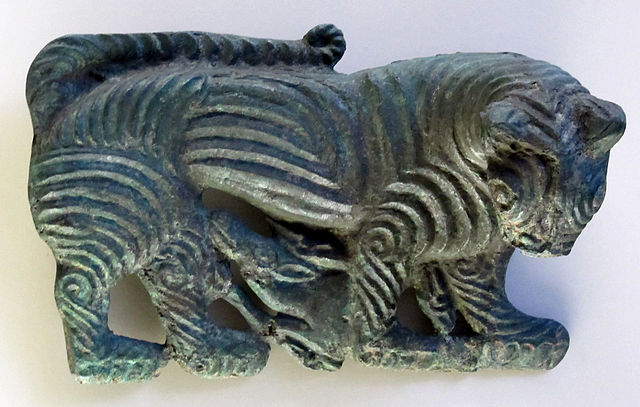Animal style art is an approach to decoration found from Ordos culture to Northern Europe in the early Iron Age, and the barbarian art of the Migration Period, characterized by its emphasis on animal motifs. The zoomorphic style of decoration was used to decorate small objects by warrior-herdsmen, whose economy was based on breeding and herding animals, supplemented by trade and plunder. Animal art is a more general term for all art depicting animals.
"Animal style" deer, (8-7th century BC) Arzhan kurgan, Tuva.
Ordos culture, belt buckle, 3rd–1st century BC
The influence of Scythian art: Fibula in the Form of a Recumbent Stag (below), about 400 AD, Northeastern Europe, and Stag Plaque (above), 400–500 BC, Scythian, western Asia, gold
Bronze idol of a bear found in the Perm Krai, 6th or 7th century.
The Ordos culture was a material culture occupying a region centered on the Ordos Loop during the Bronze and early Iron Age from c. 800 BCE to 150 BCE. The Ordos culture is known for significant finds of Scythian art and may represent the easternmost extension of Indo-European Eurasian nomads, such as the Saka, or may be linkable to Palaeo-Siberians or Yeniseians. Under the Qin and Han dynasties, the area came under the control of contemporaneous Chinese states.
Ordos culture
Bronze statuette of a man, Ordos, 3-1st century BCE. British Museum.
Belt plaque, with a tiger subduing an ibex, Ordos, 6-5th century BCE
Pazyryk tattoo design with zoomorphic symbols, 4th century BC. A precursor of the new Ordos designs.








